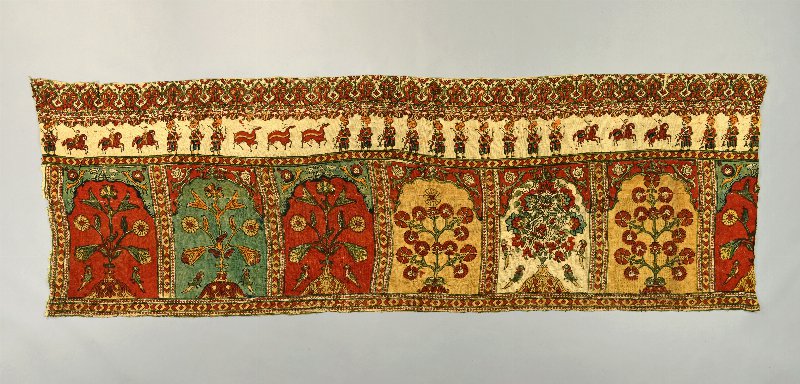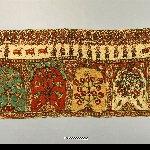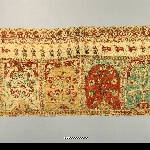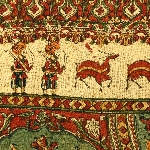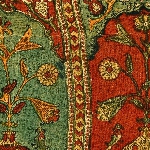Tent Hanging
29-96-17E
From: India | Gujarat (uncertain)
Curatorial Section: Asian
| Native Name | Qanat |
| Object Number | 29-96-17E |
| Current Location | Collections Storage |
| Culture | Indian |
| Provenience | India | Gujarat (uncertain) |
| Period | 19th Century |
| Date Made | Late 19th Century |
| Section | Asian |
| Materials | Cotton |
| Technique | Block Printed | Resist Dyed | Mordant Dyed | Woven |
| Iconography | Hunting | Soldier | Floral | Horse | Antelope | Bird | Parakeet | Falcon |
| Description | Fragment of a block-printed and mordant-dyed plain-weave cotton portable screen (qanat). The cotton fabric is soaked in a myrobalan (plant-derived) solution before it is printed and dyed, giving it an ochre color. The design consists of three registers: the top having an ornamental niche design featuring tripartite floral motifs; the middle a narrative frieze of a shikargah (hunting scene) featuring Sikh soldiers and antelope; the lowest and main being divided into a series of architectural niches of the Mughal qanat (tent hanging) format. Within the niches are Mughal-style floral designs. This style continued to be popular for commercially produced urban textiles into the late 19th century, when this type of qanat was used as a moveable partition to create spaces for public events (as it still is today). |
| Length | 250 cm |
| Width | 91 cm |
| Credit Line | Bequest of Maxwell Sommerville, 1904 |
Report problems and issues to digitalmedia@pennmuseum.org.


